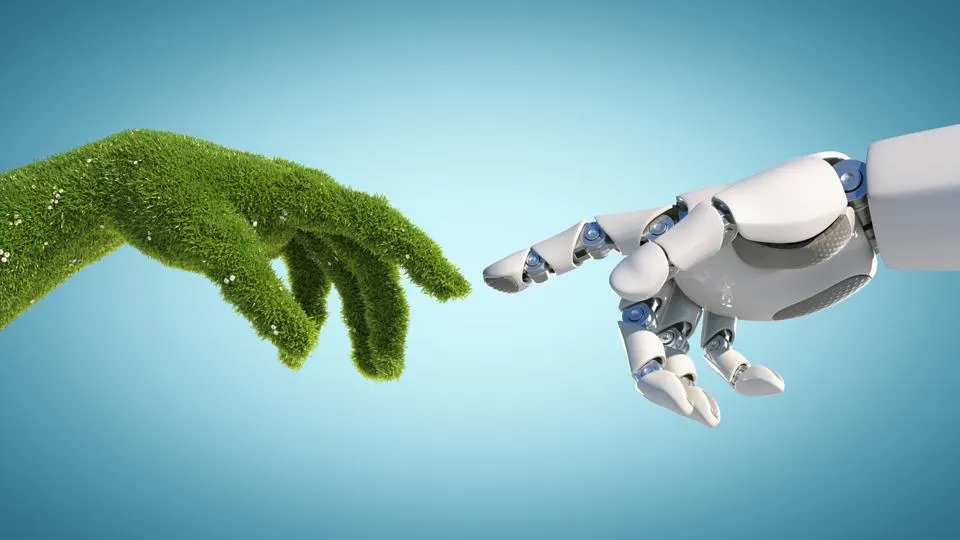Green AI: Balancing Innovation and Sustainability for a Clean Energy Future

The rise of Artificial Intelligence (AI) has brought transformative changes across various sectors, from healthcare and finance to transportation and agriculture. However, AI is now making its mark on one of the most critical areas of our time: addressing climate change. Enter Green AI, a concept that focuses on harnessing AI to drive a clean energy transition, with sustainability at its core. While the potential of Green AI is vast, it comes with its own set of challenges that need to be carefully managed to ensure its promises are realized.
As the world races toward renewable energy, traditional energy grids are proving inadequate. Their outdated designs are ill-equipped to handle the demands and unpredictability of renewable energy sources. A clear shift is needed toward smarter, more efficient, and faster systems capable of responding to time-based variations. This is where AI comes in, creating tools to improve energy distribution, strengthen the grid, and enhance efficiency, enabling a higher utilization of renewable energy.
This movement isn't limited to the United States—it's a global trend. In Europe, for instance, the European Union has integrated AI into its smart grids to track and optimize energy use across borders. These grids are designed to facilitate the integration of renewable energy sources, ensuring efficient power distribution and storage. AI plays a crucial role here by processing vast amounts of data in real-time, offering insights into supply and demand, risk mitigation, and preventing outages.
The United States Department of Energy has highlighted AI’s role in accelerating the transition to clean energy. The old infrastructure is under significant strain as it adapts to the increasing role of renewable energy. By optimizing the grid with AI-powered real-time data analysis, it becomes possible to better integrate renewables, prevent power loss, and reduce inefficiencies that currently waste billions of dollars annually. AI can also predict and avoid anomalies in the grid, preventing disruptions caused by the decentralization of power from renewable sources.
However, the renewable energy system’s backup structure must also evolve in parallel. Predictive maintenance is essential for hydropower plants, wind farms, and solar installations to remain operational. AI can analyze wear and tear on equipment, predict failures, and optimize the lifespan of assets, reducing downtime and maintenance costs. AI is also instrumental in determining the best locations for new energy infrastructure, such as solar panel installations and electric vehicle charging stations, further improving renewable energy efficiency. Precision farming, powered by AI, also helps optimize water usage during irrigation, reducing environmental impacts.
Despite its benefits, AI in energy optimization presents challenges, particularly in data centers. These facilities consume enormous amounts of power, raising concerns about the sustainability of AI’s energy requirements. By 2027, AI is expected to consume as much energy as Spain did in 2022. Without proper management, this surge in demand could undermine efforts toward a greener energy future.
However, some tech giants are already addressing these concerns. Microsoft, for example, launched the Net Zero Innovation Hub, partnering with data centers and the energy sector to achieve net-zero ambitions. Google’s DeepMind has reduced its data center cooling costs by 40% through AI-powered energy optimization. These steps showcase how AI can not only drive technological progress but also contribute to cleaner, more energy-efficient solutions.
The acceleration of AI development presents significant opportunities for investors and innovators. Recent collaborations, such as the partnership between BlackRock, Microsoft, and Global Infrastructure Partners to mobilize $100 billion for sustainable energy infrastructure, are paving the way for future advancements. These funds are crucial for scaling technologies that can enable AI to meet broad sustainability goals.
The World Economic Forum predicts that AI could triple renewable energy capacity and double energy efficiency by 2030. Achieving this will require concerted efforts from both governments and businesses. Green AI holds immense promise for the future, but its development and deployment must not contribute additional CO2 emissions. The energy required by AI, particularly in data centers, must come from renewable sources to ensure a truly sustainable transition to a clean-energy future.
The future of Green AI is bright, but it must be developed responsibly. As we modernize our energy infrastructure and create better frameworks for AI’s role in society, we have the opportunity to create a world where AI not only combats climate change but also fosters a sustainable, clean-energy future.



